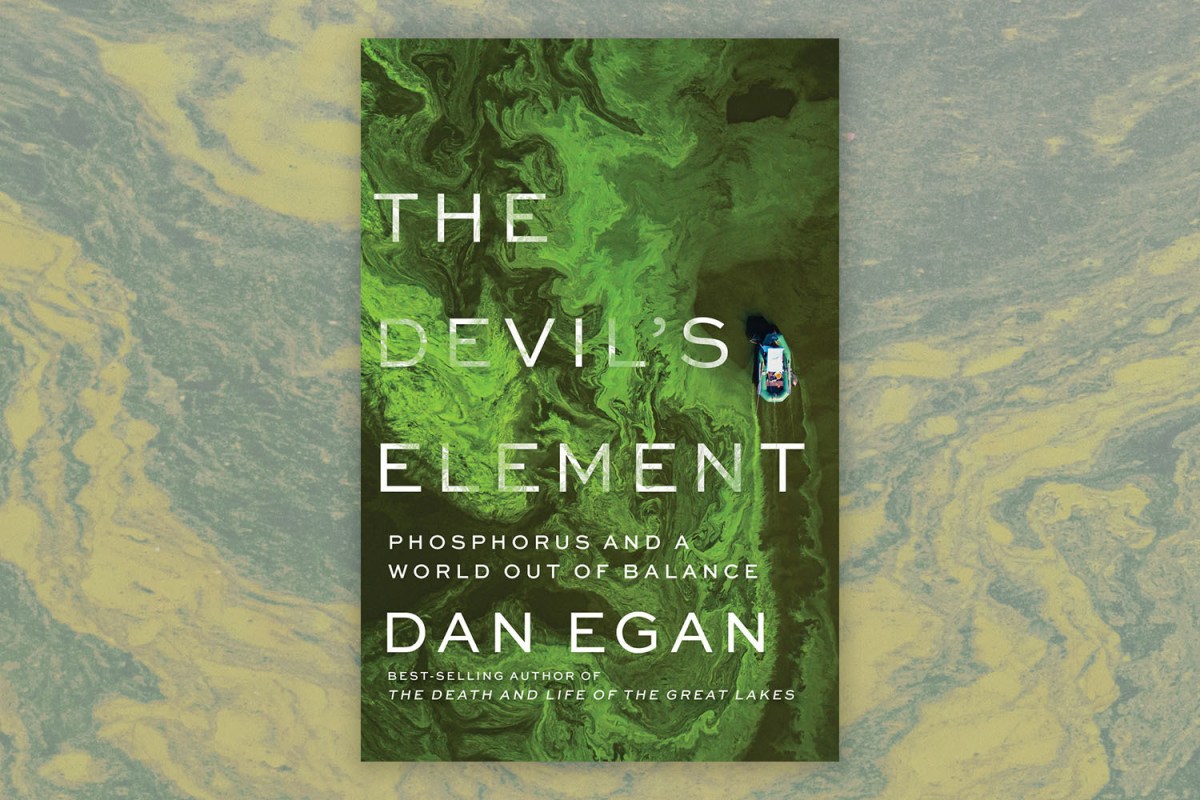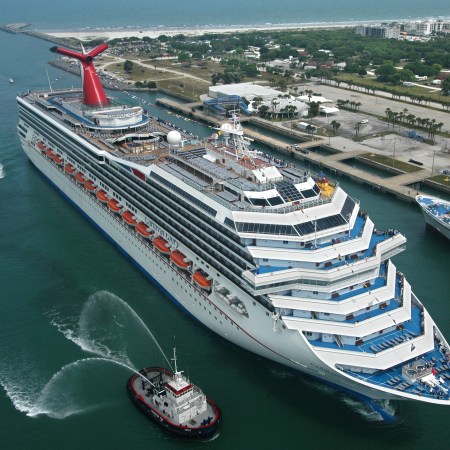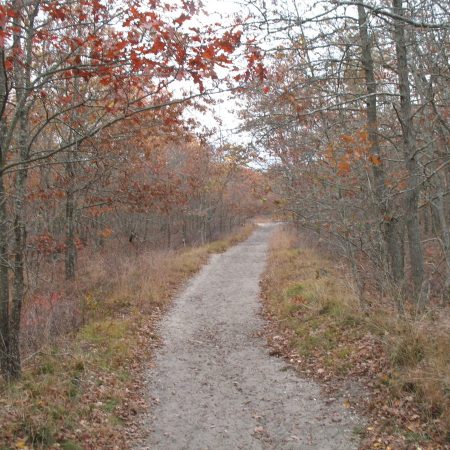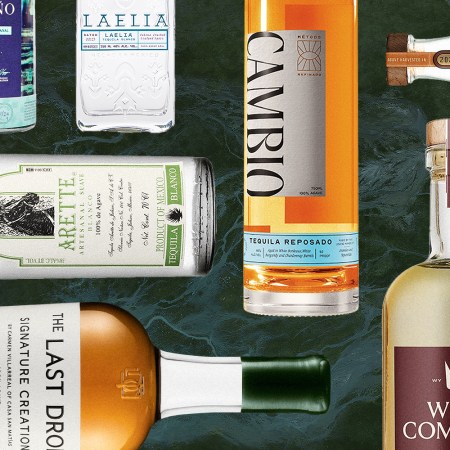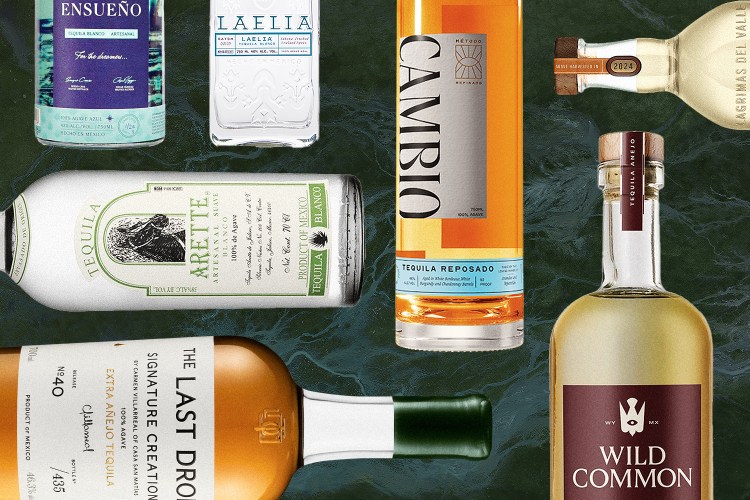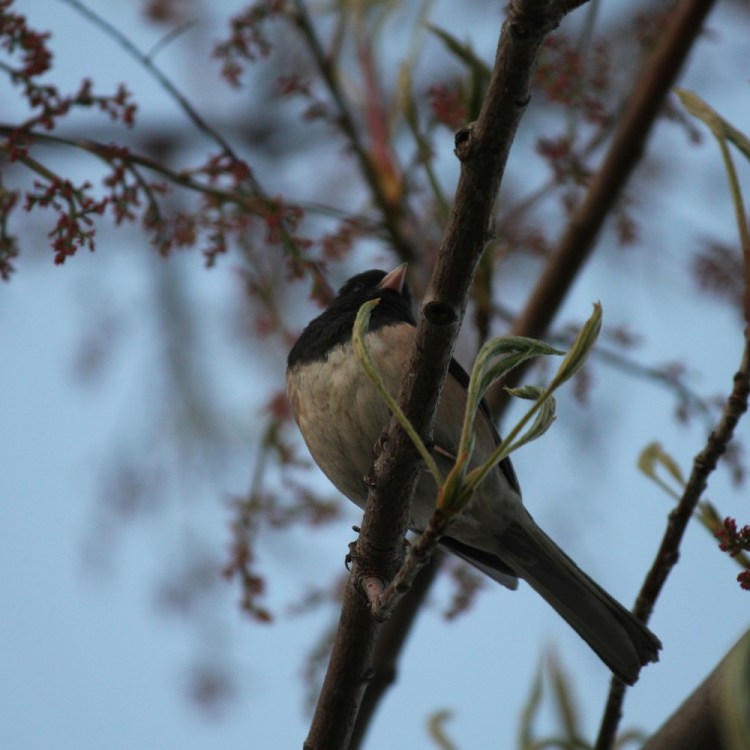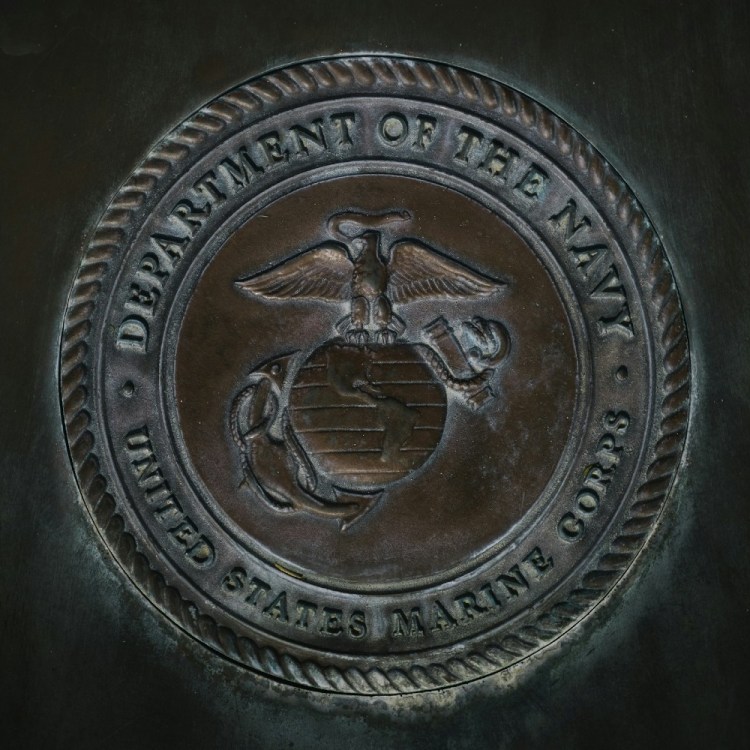When we talk about threats to the environment, climate change is often at the top of the list — and for understandable reasons. But there’s something else at play in the world right now that’s also causing an unsettling disruption to various bodies of water around the world: phosphorus. As a fertilizer, phosphorus has increased land’s ability to produce crops, but at an alarming cost.
As journalist Dan Egan writes in his new book The Devil’s Element: Phosphorus and a World Out of Balance, phosphorus also leads to a massive increase in the amount of algae in bodies of water, critically damaging the ecosystems there. There are also lingering questions about the amount of phosphorus remaining to use, something that could affect humans and animals in the coming decades.
The Devil’s Element is a taut and enlightening read, with Egan covering everything from the environmental catastrophes phosphorus pollution has wrought to its history during the last few centuries. We talked with him about the genesis of the book and the challenges he faced in researching it.
InsideHook: Was there one thing you had observed in the wild that led you to write more about phosphorus and how it connects to the algal blooms around the country and around the world?
Dan Egan: Yes. I wrote [The Death and Life of the Great Lakes] in 2017, and one of the chapters in that book involved — I call them algae blooms. I know the biologists call them algal blooms, but it’s stuck in my head, so I’m just sticking with it. While I was doing reporting for that book, I spent a fair amount of time looking at the algae problem on Lake Erie and its connection to fertilizer, both chemical fertilizer and manure. And I remember I was in the middle of that book, writing that book, and I wanted to stop and just write a book about phosphorus because it seemed very interesting. And so that stuck with me.
Some months after the book came out, I was talking to the editor at W.W. Norton who published the Great Lakes book. With some assistance from my agent, we came to the conclusion really quickly that this was a book worth doing. So we went for it.
The city of Hamburg comes up repeatedly in The Devil’s Element, from the history of phosphorus to its role in the Allied bombing of the city during World War II. At what point in your research did that overlap first come up?
I was trying to think, how do you write a book about phosphorus? How do you have an arc? Really early on, I knew the connection from the element’s discovery back in the 1500s there. Then when I was reading about the firebombing, I thought, “Oh, wow.” And then, coincidentally, an Austrian friend of mine who lives in Switzerland, I had her poke around because I was looking for a cutting edge water treatment plant that I could profile to bring some kind of happy closure to the book. And voila, it was in Hamburg.
So I quickly realized I needed to go there, and I got really lucky in that. I went in December of 2019, and had I waited two or three months, I wouldn’t have gone and I wouldn’t have been able to do the book. I got a lot out of that trip. Not just there in the city, but I went to Waterloo and I went to an agriculture research station north of London and a couple of other places. It made the book possible.
At one point in your book, there’s a little parenthetical aside at one point where you talk about driving off-road and how you should definitely opt for extra insurance if you’re renting a car to visit the site. Does this mean that you had some misadventures while traveling for this book?
I went up to the Experimental Lakes area up in western Ontario. I didn’t wreck the car or anything, but it certainly felt like it. I remember thinking that I always don’t go for extra insurance. This would have been the case if I had done it. Although I probably wouldn’t have nullified the insurance policy.
Where else did you travel to research the book?
I went to Florida, I think, three times. I went to Iowa, big corn country and big ethanol country, which figures prominently into one section of the book. I went down to the Gulf of Mexico and the Mississippi coast specifically. I traveled a fair amount.
I’m trying to think of mishaps. I mean, every time I travel, I’m like a walking mishap. (laughs) When I went to Toledo to do some reporting on the algae troubles back in 2014, I left my house with a bite on my left arm, way up by my armpit. It must have been a spider. It just got bigger and bigger. And I’m at a CVS trying to talk to a physician’s assistant showing them this huge blotch and asking what I should do.
Meanwhile, it was actually a critical week to be there. I was there for four days. And the day I left, Toledo lost its water because of a toxic algae bloom. And that was what the whole story was about.
It was interesting reading about ethanol in your book because I was reading not long ago that a significant number of Midwestern governors have been lobbying for putting higher amounts of ethanol into gasoline. From reading The Devil’s Element, I was thinking a lot more about what the environmental implications of doing something like this would be.
I’ve had some people asking if this is a call to action or something like that. And I really don’t want it to be. This isn’t a prescriptive kind of book. It’s just connecting dots to what people say what the problem is and then what the solutions might be — if there are any because they’re so far down the road with this stuff.
But having said that, the one thing that I did come away from with all my research was the folly of ethanol, and that it is a big piece of low-hanging fruit in this problem. As I wrote, 40% of the corn we grow goes to ethanol — more than 50% in Iowa. And that’s just not necessary. It’s not beneficial to anybody but the people growing it.
You wrote about the existence of an exemption in the Clean Water Act for agriculture. Has there ever been any serious discussion of closing that?
Not that I was party to. I mean. It feels fairly disgusting — nobody wants to put farmers out of business. The work they do is essential. But at the same time, it shouldn’t and doesn’t have to be done at the expense of our fresh water. And when they passed the Clean Water Act of 1972, the rationale was that the pollution generated by agriculture was so diffuse and so difficult to regulate because it’s poop on a field or excess nutrients in the landscape. How do you clean that up?
Things have changed now. With the concentrated animal feeding operations, factory farms, whatever you want to call them, what they’re doing is consolidating all that animal waste to the point where it is manifestly a pollution source. And you can make the argument that it no longer deserves the exemption that it’s had for the last 51 years. People know this, and I guess the best way to go would be to incentivize the farmers — if it’s a carrot and stick, start with a carrot, but there have been a number of carrots, and they’re not very big carrots, thrown at this problem to help farmers pay for better management of their agricultural lands. It’s just not working.
Just like the detergent industry in the 1960s wasn’t going to voluntarily pull phosphate from the detergent formula. It took laws and an outraged public to get that change, and it really led to remarkable improvement in water from Lake Erie all the way across the continent and around the world, really.
I’ll say it again, it’s not to denigrate or disparage the farmers, they’re just operating in the system that has been set up for them. But I think it is fair to criticize that system and to look at how we could make it better for them and for everybody else.
One of the things you’ll hear is, “Do you want the price of milk to go through the roof?” And no, I don’t, but milk really isn’t that expensive. It depends on where we are in the milk cycle, but it really isn’t all that expensive to the consumer. But it’s not as cheap as the farmers are selling it because there’s an unaccounted for cost, specifically poisoned water. That’s a real cost. That doesn’t show up on the ledger anywhere, but it’s being paid by families that can’t go swimming in their neighborhood lakes and don’t feel comfortable or secure drinking the water coming out of their taps. So there are real costs already to milk production that aren’t being factored in in a traditional way. Maybe it would be better if the pricing goes up a bit, but the quality of the water and the beaches improved.
One Journalist’s Dispatch From the Battle to Protect the Amazon Rainforest
An excerpt from Eliane Brum’s “Banzeiro Òkòtó: The Amazon as the Center of the World”There’s a moment early on in The Devil’s Element where you talked about seeing if you could create or extract phosphorus at home. You talked about looking into using a turkey fryer. Have there been any other moments where, as a journalist, you have been able to use a turkey fryer in the context of your work?
You’ve got to come out of the gate strong because it’s not a sexy topic on its face. So I planned to open the book by extracting phosphorus. I thought it might be possible, and if it was impossible, it would at least be worth a try. But then I was quickly disabused of that hope by a guy who specializes in doing these kinds of experiments.
My father-in-law was a chemical engineer and spent his life working on catalysts for nitrogen, so he knew some things. And he was an old English guy, and he said, “It’s not gonna work, but let’s give it a go.” And then I was told not even to try. If I went alone, I would have probably trashed my system for a long time.
Are there any lakes in or around the United States where you would say there are grounds for optimism as far as responding to algae blooms and the pollution that’s caused them?
We do have a ton of success at lakes from Lake Erie, and beyond that, I was speaking of the 1970s when we finally started pulling phosphate out of the detergent formula. The water cleaned up remarkably fast. Dr. Seuss slammed Lake Erie in The Lorax back in 1972. He said the water was — it was part of a rhyme — the water was smeary. By 1985, because of the phosphate reduction and reformulated detergent, the lake had recovered to the point that he pulled that line from the book. If you go to a bookstore now and buy it, you won’t see any reference to Lake Erie.
Unfortunately, it may be time to put it back in because we’ve gone backwards. But this new generation of phosphorus trouble isn’t the same as the 1960s because it’s just so much more widespread. And it’s not a matter of just turning off a spigot, like we essentially did in the 1970s. This is going to take a real change in the way we farm, and then it’s going take patience because there’s so much of this stuff accreted in the soil — then in the sediments and the bodies of water ¸— that it’s gonna be hanging around for a long time.
I would argue that doesn’t mean that we shouldn’t try. It’s like just trying to be healthy. You don’t throw in the towel when you’re 35 because you haven’t been living the cleanest life you can for the last 20 years. You make changes. I don’t think it’s a hopeless case at all. You can’t really fault people for what’s happened because we were making the best decisions that we could at the time. But things have changed in the last five or six years. We know enough now to know that we need to change, and that’s not happening.
This article appeared in an InsideHook newsletter. Sign up for free to get more on travel, wellness, style, drinking, and culture.
